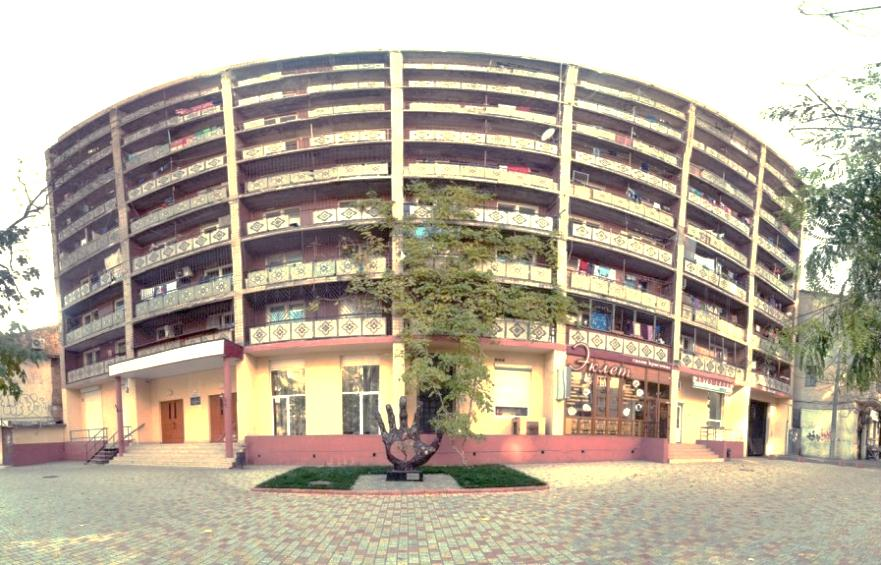The State University of Intelligent Technologies and Communications (SUITT) was established in accordance with the order of the Cabinet of Ministers of Ukraine No. 1042-r dated August 19, 2020 through the reorganization of the Odesa National Academy of Communications (ONAC) named after O.S. Popov and Odessa State Academy of Technical Regulation and Quality (OSATRQ).
On September 22, 2021, the election of the first rector of the newly established university was held. Candidate of physical and mathematical sciences, associate professor Oleksandr Askoldovych Nazarenko won the election.
Briefly about the history of the Academy of Communications named after O.S. Popova
In 1900, Higher courses of telegraph mechanics were opened in Odessa, which trained technicians for the southern part of Russia at that time. The course building was located at Staroportofrankivska Street, 16. At the turn of the past and present centuries, the main form of electrical communication was the telegraph.
The meeting of the first Odesa district committee was held in the course building, which included teachers V.F. Diedrichson, an outstanding electrical engineer, and E.O. Buchheim later became a professor at the institute.
At the congress of railway electricians and chiefs of telegraphs, which took place in Odessa (1897), it became clear that the electrical engineering of “weak” currents reveals a wide range of problems that require separate study. A strong argument in favor of this was the demonstration by O.S. Popov at the congress of the experiment of wireless telegraphy, which caused general admiration and ovation.
The practical needs of communication in Odessa during the revolution and civil war were met by private radio telegraph workshops.
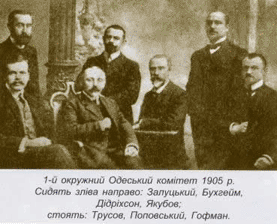
In 1919, these workshops were reorganized into the first Odesa State Radiotelegraph Plant in Russia (ORTZ, Sofiivska, 8).
Professor L. I. Mandelstam and Associate Professor N. D. Papalexi worked as scientific consultants of the radio laboratory – both later world-famous academicians.
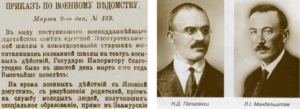
In 1920, on the basis of postal and telegraph courses, the Odesa Higher Electrotechnical School was organized. It was from this moment that the history of the Odesa National Academy of Communication named after O.S. Popova A total of 89 people were enrolled in the technical school.
In 1923, ORTZ ceased its independent functioning. In the same year, the educational process was resumed in the building of the former courses of telegraph mechanics, but already as the Odesa Higher Electrotechnical School of Strong Currents named after G.F. Hrynka, the People’s Commissar of Education of the Ukrainian SSR. Graduates of OBE received the qualification of an engineer after four years of study.
In 1925, a low-current department with three small groups of telegraph operators, telephone operators and radio operators was created at the Higher Electrical Technical College. From that time, the training of communication engineers began in Odessa, the first official graduation of which took place in 1925.
In the fall of 1929, an education reform took place and the Higher Electrotechnical School became the electrical engineering faculty of the Odessa Polytechnic Institute (OPI).
In the following year, according to the Decree of the Central Committee of the USSR and the RNA of the USSR (No. 4/237 of July 23, 1930), the Odesa Institute of Communication Engineers (OIIZ) was established on the basis of the OPI electrofaculty, the first graduation of which took place in 1931.
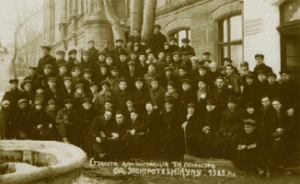
S. D. Yasinovskyi, dean of the OPI electrical engineering department, was appointed the director of OIIZ.
The new educational institution was allocated a building for telegraph mechanics courses – the Higher Electrotechnical School and a two-story school building at Komsomolska Street, 61. In 1930-1931, the third and fourth floors were added to this building and it became the educational building of the institute. And later – the laboratory building.
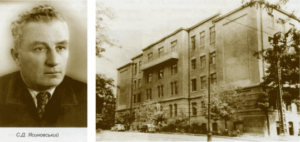
During the establishment of the institute, a 1931 graduate S. M. Plahotnyk – later one of the Deputy Ministers of Communications of the USSR, laureate of the State Prize of the USSR – was engaged in the design and production of equipment in the institute’s radio workshops for the needs of the Red Army. The work was carried out under the direct supervision of the deputy of the People’s Commissariat of the USSR M.M. Tukhachevsky.
S. M. Plahotnyk was one of the first in the Soviet Union to design a television, the work of which was demonstrated in the premises of the Odessa Opera and Ballet Theater for the participants of the regional congress of Soviets. Later, in 1933, he presented an improved model of this TV set to Marshal of the Soviet Union K. E. Voroshilov on the day of the celebration of the anniversary of the Red Army in Moscow.
In 1935-1937, under the leadership of S. M. Plahotnyk, long-distance transmissions of short-term television from Odesa to Moscow were carried out for the first time in the Soviet Union.
In 1931-1937, communication educational institutions of all levels in Odesa (OIIZ, technical school of communication, school of FZN) formed the so-called communication combine.
Many pre-war graduates of the institute became recognized specialists in the field of telecommunications. Among them are doctors of technical sciences, professors I.S. Honorovskyi, H.3. Eisenberg, A.M. Zingerenko, P.I. Yevdokimov, laureates of state awards V.F. Zhelezov, S.M. Plahotnyk, A.A. Bolshoi, N.N. Smirnytskyi, V. Shumeiko.
Since 1937, the institute was headed by Volodymyr Andriyovych Nadezhdin, a graduate of the Military Communications Academy.

The beginning of the Great Patriotic War caught the institute in its heyday.
From the first days of the war, extremely intense work began, directed against the enemy’s onslaught. To a certain extent, this was facilitated by the pre-war “military” groups of graduates of the institute, whose training was carried out according to special programs. Thanks to this, the Red Army was replenished with a significant number of highly qualified commanders of communications units. Many of them became senior officers and generals. For example, 1941 graduate N.N. Smirnytskyi was awarded the rank of lieutenant general. After the war, he became a laureate of the State Prize of the USSR for his great contribution to the development of mechanical engineering. Some communications graduates were participants in extremely important historical events. Thus, a graduate of 1941, F. T. Kanivchenko managed the communication organization of the Supreme Commander-in-Chief at the international Tehran and Yalta conferences, and a graduate of 1934, A. G. Moldovanov, commanded the radio communication node through which information passed to Moscow and Paris from the place of signing The act of unconditional surrender of Germany.
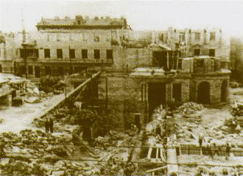
But all this was later. And in the troubling time at the beginning of the war, when the traditional defense of diploma projects was taking place, young engineers, without waiting to receive diplomas, went to the military commissions. Many teachers and students voluntarily joined the ranks of the fighter battalion, which carried out patrol duty for the protection of their native city.
In July 1941, intensive preparations of the institute for evacuation were underway. In the laboratory buildings of the institute, on the basis of non-transportable equipment – a radio station, a telegraph laboratory and a diesel power plant with guaranteed electricity supply – a communication hub of the Maritime Army was created, which played an extremely important role in the heroic defense of Odessa. To a large extent, thanks to the clear work of communication, Odesa remained intact, and the laboratory buildings, as important military objects of communication, were destroyed. The institute was evacuated to the city of Guriev, located on the northern shore of the Caspian Sea. But the institute could not start its work there due to the lack of necessary premises. Therefore, he was sent to the city of Tashkent. The Moscow Institute of Communication was also evacuated there. For more rational use of teachers and laboratory equipment, the institutes were united.
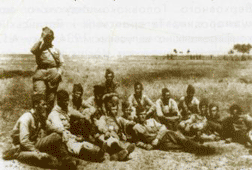
V. A. Nadezhdin was appointed director of the joint institute in April 1942. In the summer of 1944, a decision was made to resume the activities of the Odesa Electrotechnical Institute of Communications Engineers (OEIIZ).
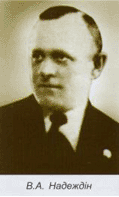
The former director V. A. Nadezhdin put a lot of effort into this. At the beginning of 1945, the management of the institute was once again entrusted to S.D. Yasinovskyi. The old and new pre-war laboratory buildings of the institute were in ruins and could not be restored.
An active German hospital was located in the educational building (now the first laboratory building).
As a result of incredibly difficult organizational measures to resettle the hospital, manufacture educational furniture and the first laboratory stands, already in October 1944, the first admission of 60 students to the institute after the liberation of Odessa from the fascist invaders was held.
Students lived and studied in institute classrooms. The half-destroyed building of the student dormitory on Manezhnaya Street was temporarily given to teachers returning to the institute, and the headquarters of the Higher Education Institution was located in the building on Ostrovidova Street. Not long after the war, the legendary Victory Marshal G. K. Zhukov worked there, as evidenced by the bas-relief installed on the building.
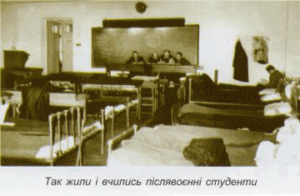
The war with Hitler’s Germany ended victoriously. But not everyone returned from the war. Many teachers and students gave their lives for the Motherland. The monument to signalmen, erected near the main building at the expense of employees and students, is a tribute of respect of the living to the memory of the dead. Front-line students brought an atmosphere of discipline and responsibility to institute life.
This helped in the organization of the educational process during the period of great hardship of the post-war period, and had a positive effect on the next generations of students.
In 1948, the management of the institute was entrusted to associate professor Ivan Petrovych Pyshkin. Under his leadership, in 1954, students and teachers built one of the first experimental television centers in the USSR, serving Odesa, from trophy radio parts. The beginning of educational work in the new premises (September 1953) became an important, turning point in the life of the institute, its new birth. Students who entered the institute in 1954 began studying in this building. Their graduation in 1959 produced the most important results in the entire history of the institute: 7 doctors and 46 candidates of technical sciences. The works of some of them were awarded the State Prize (I. Dezhurny, A. Shutko), the Prize of the Council of Ministers of the USSR (A. Zhadan), the Gold Medal of the VDNG of the USSR (A. Kogut). The Institute is proud of such graduates as Lenin Prize laureates A.A. Bolshoi, V.G. Popov, N.F. Lukonin, L.M. Kosoi, laureates of the State Prize S.M. Plahotnyk, V.I. Korol, V.N. Timofeev, A.I. Romanov.
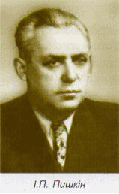
In 1956, OEIZ developed the country’s first image recognition system, and also introduced the MAP-0 sheet-sorting machine into serial production.
In 1959, an out-of-town scientific training ground was created on five hectares of land, and the scientific research work “Meteor” was started, where the leading scientists of the academy began their scientific activities under the leadership of A.I.Khachaturova Residents of Odessa and numerous guests of our city enjoy listening to the music of I.O.Dunaevsky, which sounds from Odessa chimes, which were created at the institute in 1959. The work of chimes has become a kind of symbol of Odesa. In 1953, a correspondence faculty was established at the institute, in 1956 – an evening faculty, and in 1962 – the Chisinau educational and consulting center.
Since 1965, the institute has had a specialized council for the defense of candidate’s theses in the following scientific specialties: “Theory, systems and devices for transmitting information through communication channels” and “Networks, communication nodes and information distribution”.
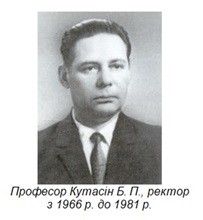
In 1966-1981, the institute was managed by Doctor of Technical Sciences, Professor Borys Petrovych Kutasin.
In 1967, the Kyiv Correspondence Faculty was opened, on the basis of which the Kyiv Institute of Communications was later created. In the same year, 1967, by the Decree of the Council of Ministers of the USSR, the institute was named after the inventor of radio O.S.Popova
And in 1980, the Presidium of the Verkhovna Rada of the Ukrainian SSR awarded the institute with an Honorary Certificate for the successes achieved in the training of communication engineers and the development of scientific research.
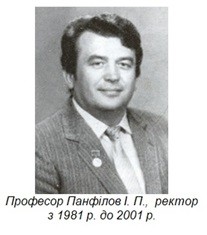 From 1981 to 2001, the Institute was headed by Doctor of Technical Sciences, Professor Ivan Pavlovich Panfilov. 1991 in the SEZ named after O.S.Popova opened a doctoral program. In 1993, the Odesa Electrotechnical Institute of Communication became the Ukrainian State Academy of Communication named after O.S.Popova In the same year, the Center for Humanitarian Education and Development (TsGO and R) and the Department of International Relations (IMR) were established. In 1998, the training of foreign citizens at the preparatory department (PV) began at the academy. In February 2000, the first distance learning sessions were organized for signalmen in Kyiv, Kharkiv, Yerevan, Tbilisi, Chisinau, and Baku. In September of the same year, for a significant contribution to the development of the communications industry, the training of highly qualified specialists, and on the occasion of the 70th anniversary of the founding of the academy, UDAZ named after O.S.Popov was awarded the Certificate of Honor of the Cabinet of Ministers of Ukraine. In August 2001, by the Decree of the President of Ukraine, the Ukrainian State Academy of Communications was granted the status of a national institution of higher education. The Academy changes its name to Odesa National Academy of Communication named after O.S.Popova
From 1981 to 2001, the Institute was headed by Doctor of Technical Sciences, Professor Ivan Pavlovich Panfilov. 1991 in the SEZ named after O.S.Popova opened a doctoral program. In 1993, the Odesa Electrotechnical Institute of Communication became the Ukrainian State Academy of Communication named after O.S.Popova In the same year, the Center for Humanitarian Education and Development (TsGO and R) and the Department of International Relations (IMR) were established. In 1998, the training of foreign citizens at the preparatory department (PV) began at the academy. In February 2000, the first distance learning sessions were organized for signalmen in Kyiv, Kharkiv, Yerevan, Tbilisi, Chisinau, and Baku. In September of the same year, for a significant contribution to the development of the communications industry, the training of highly qualified specialists, and on the occasion of the 70th anniversary of the founding of the academy, UDAZ named after O.S.Popov was awarded the Certificate of Honor of the Cabinet of Ministers of Ukraine. In August 2001, by the Decree of the President of Ukraine, the Ukrainian State Academy of Communications was granted the status of a national institution of higher education. The Academy changes its name to Odesa National Academy of Communication named after O.S.Popova
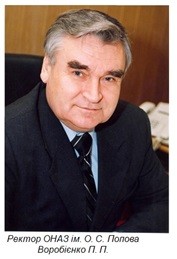
From 2002 to 2020, the Academy was headed by Doctor of Technical Sciences, professor, laureate of the State Prize of Ukraine in the field of science and technology Petro Petrovych Vorobienko. In 2003, the Lviv educational and scientific center of the Odesa National Academy of Communication named after O.S.Popov, and in 2004 – the Vinnytsia Educational and Scientific Center. In the same year, a cooperation agreement was signed with the Higher Specialized School named after Georg Simon Ohm for the implementation of the student exchange project and funding from the German Academic Exchange Service (DAAD). In September 2005, for a significant contribution to ensuring the development of the communications industry, the training of highly qualified specialists, and on the occasion of the 75th anniversary of the founding of the academy, ONAZ named after O.S.Popov was awarded the Certificate of Honor of the Cabinet of Ministers of Ukraine. In 2006, the Southern Ukrainian Linguistic Center was established at the academy under the Tempus-Tacis program. In 2008, the academy joined the Great Charter of Universities.
In 2009, scientists of the Academy, namely: Vikulin Ivan Mykhailovych, Vorobienko Peter Petrovych, Kurmashev Shamil Jamashevich, Panfilov Ivan Pavlovich were awarded the State Prize of Ukraine in the field of science and technology for the work “Development of highly efficient technologies of optoelectronics and communication systems based on them”.
2011 at the II International Exhibition “Modern Educational Institutions – 2011” ONAZ named afterO. S. Popova received the Grand Prix “Leader of Higher Education of Ukraine” for high activity indicators.
2015 ONAZ named after O.S.Popova won a gold medal at the exhibition “Modern educational institutions” in the nomination “Innovative technologies for identifying, teaching and supporting gifted children and youth” and a diploma for creative work to improve the quality of national education.
By Decree of the President of Ukraine No. 686/2015, Academy employees, namely: Vasiliy Evgeny Viktorovych, Volodymyr Mykhailovych Granaturov, Vadym Anatoliyovych Kaptur, Anatoly Hryhorovych Lozhkovskii, and Viktor Ivanovich Tikhonov, were awarded the State Prize of Ukraine in the field of science and technology for the work “Technological, Organizational and Regulatory Principles building telecommunication networks of modern and future generations”.
In 2019, the International Telecommunication Union (ITU) jointly with the Odesa National Academy of Communications (ONAZ) named after O.S.Popov of the Ministry of Education and Science of Ukraine conducted the ITU Regional Economic Dialogue on Information and Communication Technologies for Europe and the CIS (RED-2019).
2020 Odesa National Academy of Communication named after O.S.Popova celebrated the centenary of its foundation. On the occasion of the anniversary, the ONAZ team named afterO.S.Popov was congratulated by the heads of the Ministry of Education and Science of Ukraine, the Verkhovna Rada of Ukraine, and the Odesa Regional Administration.
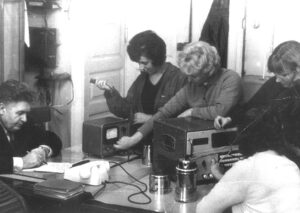
Brief history of the Odessa State Academy of Technical Regulation and Quality
On September 2, 1945, based on the submission of the board of the Committee for Measures and Measuring Instruments under the Council of People’s Commissars of the USSR dated June 15, 1945 and Resolution of the Council of People’s Commissars of the USSR No. 13091 dated September 2, 1945, the Odesa Technical College of Measurements was established.
The first students were enrolled in the groups of electro-thermal engineering and mechanical measurements by the orders of the technical school dated 10.09.1946 and 11.09.1946.
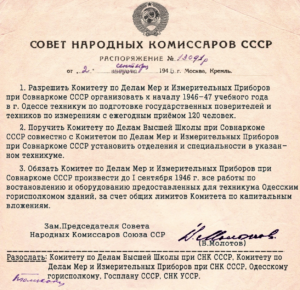
Until the newly established technical school did not have its own building, theoretical classes were held in classrooms rented from the secondary school number 58 on 1905 street (today Tiraspolska), which survived the German bombs. But for laboratory classes, I had to go to Otrada, where the Odesa Regional Laboratory of State Supervision of Measuring Equipment was located on the slopes of Langeron at Mykola Hefta Street, 10 (today Chornomorska) – one of the oldest metrological institutions, which dates back to the first verification tent created in Odessa in 1902 with the personal participation of the founder of domestic metrology, the first head of the Main Chamber of Weights and Measures in Russia, Dmytro Ivanovich Mendeleev.
Under the leadership of the first director of the technical school S.K. Listorenko, the restoration of the building destroyed by the war at the corner of Gorky and Ostrovydov streets (now Spiridonivska and Novoselsky) was started to create its own educational and laboratory base.
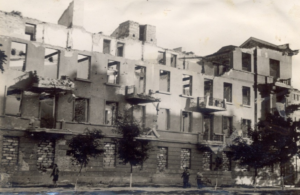 | 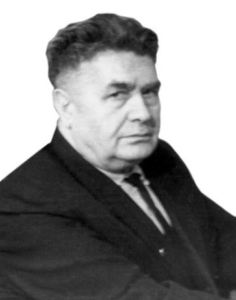 |
С.К.Лісторенко (1945 – 1953) |
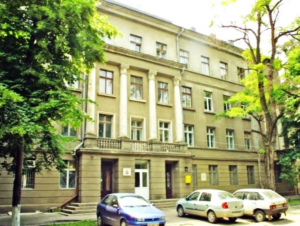
Odesa Technical School of Measurements, as a basic educational institution of the State Standard of the USSR, had its branches and educational and consulting points in almost all the capitals of the republics of the former Union, as well as in the cities of Leningrad, Moscow, Novosibirsk, Sverdlovsk, Khabarovsk, Kharkiv. By order of the State Standard of the USSR, the Moscow and Sverdlovsk ZVOs of Russia were formed on the basis of the branches, and on April 20, 1984, the Belotserk branch was established (it is still active today).
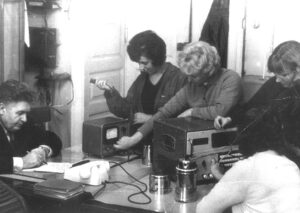 | 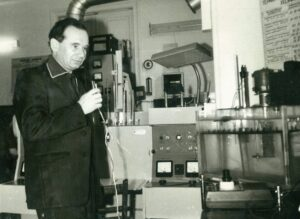 |
 | 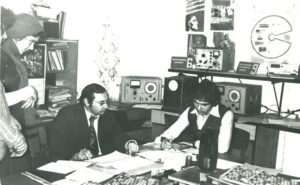 |
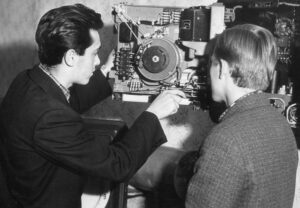 | Students of the group of radio operators created a collective radio station with a power of 100 watts and went on the air for the first time on March 16, 1959, establishing two-way communication on radio routes up to 10,000 km long. |
Weekdays of the Odessa Technical School of Measurement
In accordance with the Order of the Council of Ministers of the USSR No. 306 of 01.03.1990, the Order of the State Committee of the USSR on Public Education No. 293 of 29.04.1990 “On the Creation of Higher Vocational Schools” and the Order of the State Standard of the USSR No. 406 of 27.04.1990, the Odesa Technical College of Measurements was established on the basis of Odessa Higher School of Metrology and Quality.
In connection with the declaration of Ukraine’s independence, the Odesa Higher School of Metrology and Quality of the State Standard of Ukraine was established by Order No. 44 of 28.11.1991.
Odesa College of Standardization was established on the basis of the decision of the Interbranch Accreditation Commission dated 18.06.1993 (protocol No. 5/2), the collegium of the Ministry of Education of Ukraine dated 23.06.1993 (protocol No. 13/2), the order of the State Standard of Ukraine No. 122 dated 31.08.1993, metrology and certification.
The heads of the Odesa Technical School of Measurements, the Odesa Higher School of Metrology and Quality, the Odesa College of Standardization, Metrology and Certification were:
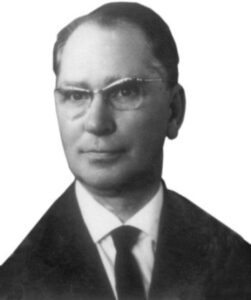 | 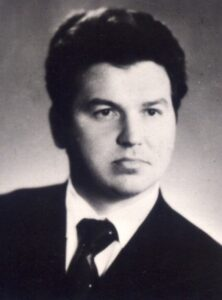 | 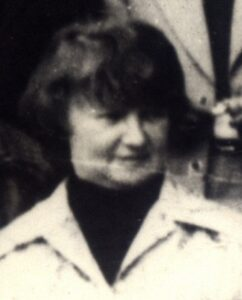 | 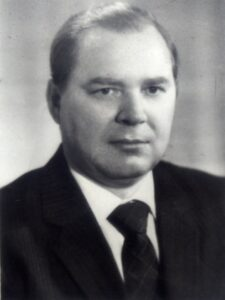 |
| І.П. Метьолкін (1953 – 1974) | Ю.Ф. Вожжов (1974 – 1976) | Н.М. Панасюк (1977 – 1983) | Г.М. Гонтаренко (1983 – 2002) |
In accordance with the Decree of the CMU dated 20.04.2007 N211-r, the Odesa State Institute of Measuring Technology was established on the basis of the college, which in 2011 was reorganized into the Odesa State Academy of Technical Regulation and Quality (Decree of the CMU dated 26.01.2011 No. 57-r).
More than 45,000 specialists have been trained at the educational institution, more than 10,000 of them during the years of independence. During its existence, the institution trained specialists for 38 countries of the world.
Many heads of state institutions, enterprises, metrology and standardization services of industrial giants of Ukraine, CIS countries, Afghanistan, Bulgaria, Venezuela, Vietnam, Israel, Iraq, Estonia, China, Congo, Cuba, Latvia, Laos, Lithuania, Mongolia, Nigeria, Academy graduates from Germany, Slovakia, Croatia and the Czech Republic.
For a significant contribution to the development of education and science in the field of standardization, metrology, certification, quality management and protection of consumer rights, significant achievements in scientific and pedagogical activities, high-quality training of specialists, the educational institution was awarded the Certificate of Honor of the Cabinet of Ministers of Ukraine (2010), the Order of Friendship B’ ethnic group (2007) and Laos (2011).
ODATRYA was the only higher education institution of Ukraine that carried out a full cycle of graduate training of specialists: junior specialist – bachelor – master – graduate student – doctor of science in the field of knowledge “Automation and Instrumentation” and provided educational and informational and advisory services for improving qualifications in the fields of technical regulation, metrology , quality and consumer policy.
The rector of the educational institution from 2003 to 2021 was Leonid Volodymyrovych Kolomiets, doctor of technical sciences, professor, honored worker of the service sector of Ukraine.
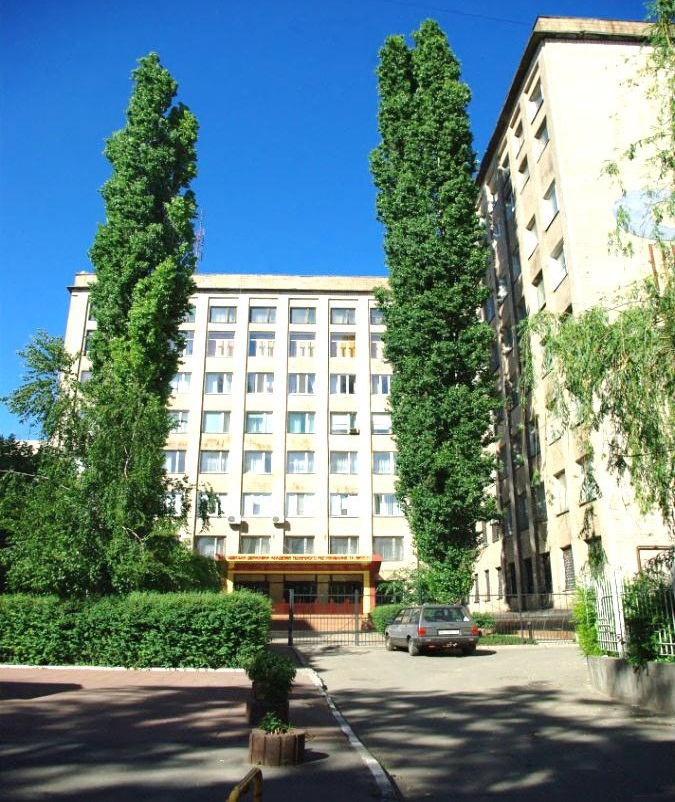 | |
Від якості освіти до якості життя! | |
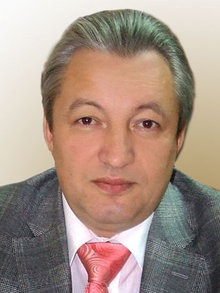 | |
Коломієць Л.В., ректор ОДАТРЯ (2003 – 2021) |
